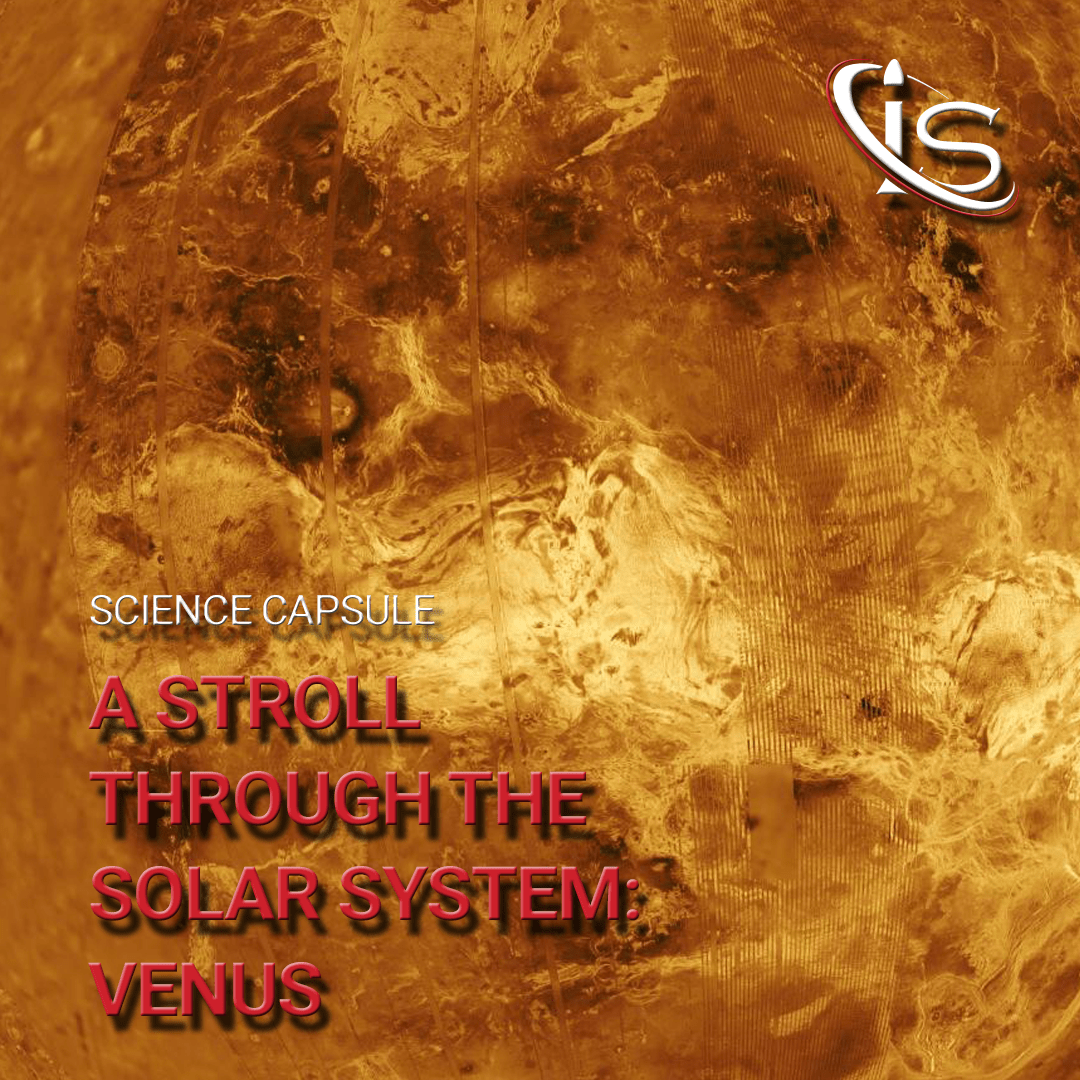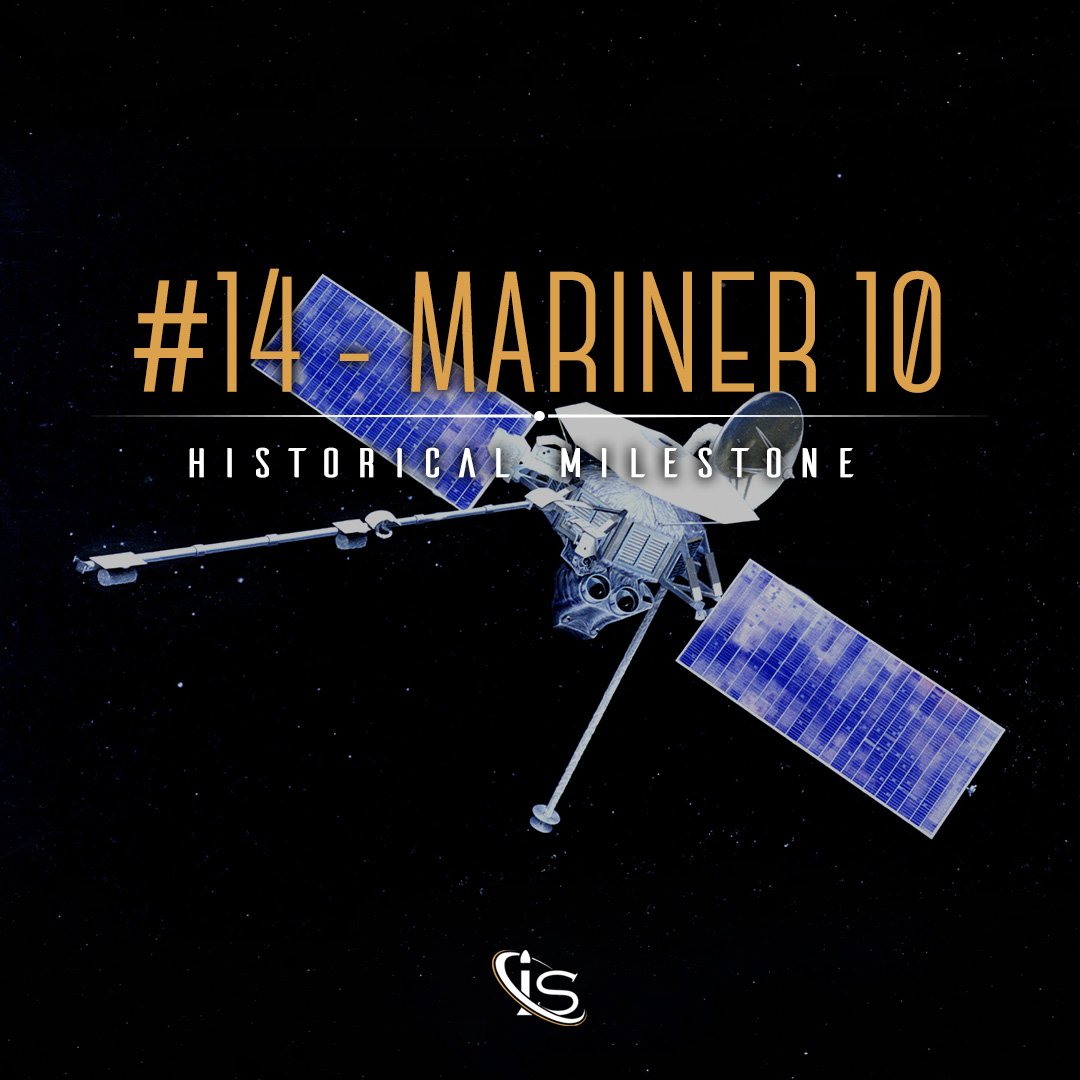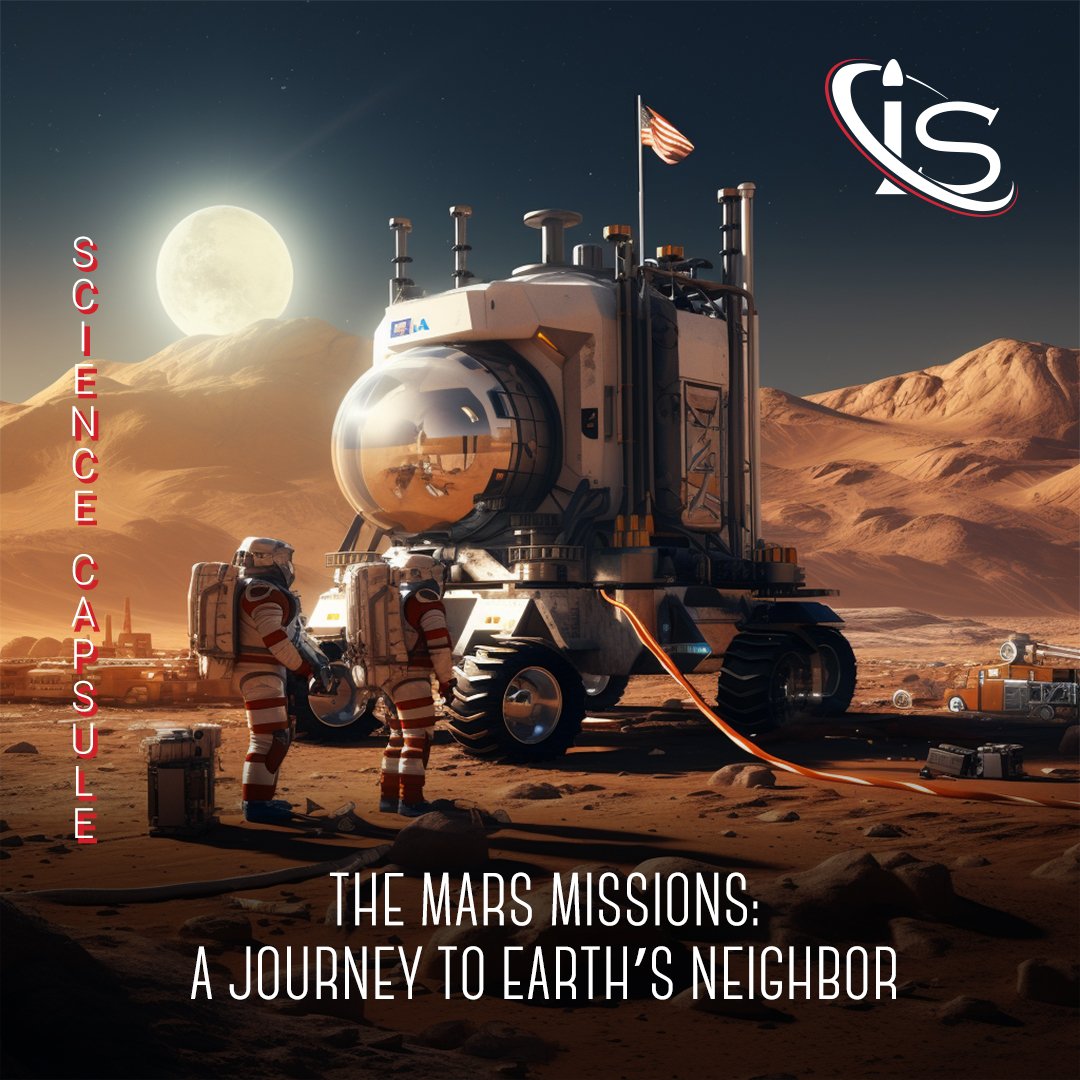Welcome back to another installment of the series that I am now calling “Space Programs Through the Years”. Today, we tackle the most important missions sent to my favorite planet: Venus. Much like with Mars and the Moon, there have been many programs centered around Earth’s twin, so let’s jump right in.
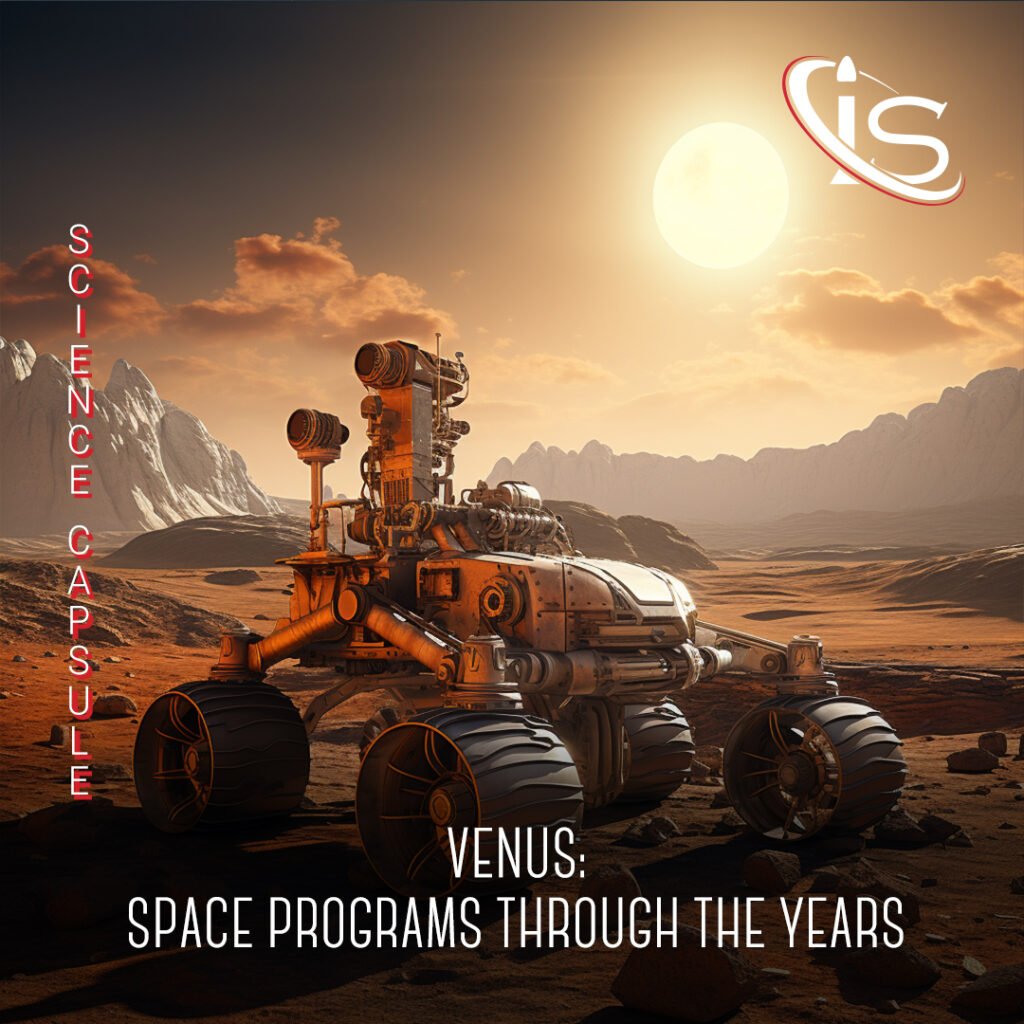
NASA’s Mariner Missions
As always, I will work my way back from the earliest missions to the modern-day ones. Although, I will group missions together in one section if they are from the same program, even if some other ones occurred in-between. And so, first up, we have the Mariner missions sent to Venus by NASA. Although, I should specify that the Soviet Union had started its own program centered around this planet already at that point. However, no spacecraft successfully got to Venus prior to the Mariner one. So, it only seems natural to put these as the first stop in today’s capsule.
Mariner 1
On July 22nd, 1962, the first Mariner vehicle took off from Cape Canaveral. The objective was a flyby of Earth’s hotter neighbor. Unfortunately, shortly after launch, something went wrong causing the spacecraft to start taking an unintended trajectory. To avoid it crashing into unwanted areas a self-destruct command was issued before the separation of the stages. The reason behind the failure is very technical, so I will not try to explain it here, as I am not qualified for that. All I can say is that it was related to the airborne beacon equipment and some faulty coding that led to incorrect guidance signals.
Mariner 2
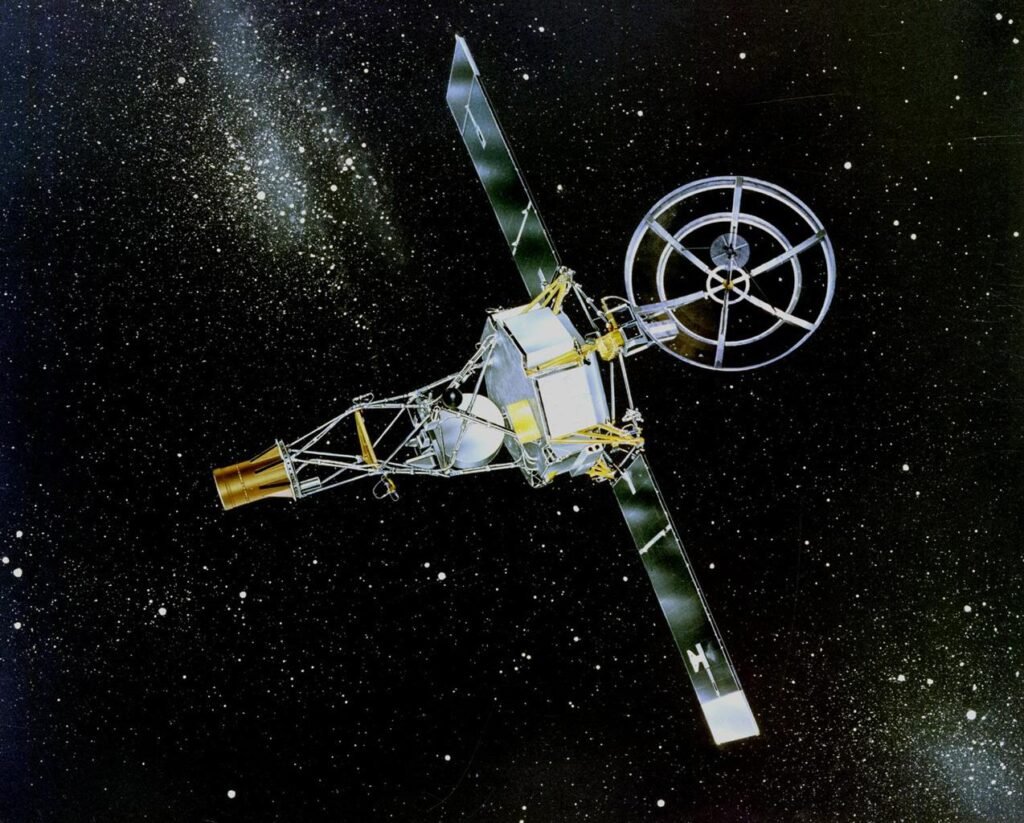
Now, let’s move on to the first successful flyby of Venus, the Mariner 2 mission. And in fact, this was the first ever successful flyby of any planet, not just our twin. This spacecraft lifted off on August 27th, 1962, still from Cape Canaveral. The spacecraft consisted of two stages, Mariner 2 and Agena. This time the launch went successfully, leading to the separation of the two vehicles 26 minutes and 3 seconds after launch.
This marked the beginning of Mariner 2’s journey to Venus. The trip there lasted until December 14th, 1962, at which point the vehicle’s radiometers were turned on. Furthermore, the latter stages of the journey were powered by the solar energy gathered by Mariner 2’s solar cell wings. After reaching the planet, this spacecraft would continue to gather data until January 3rd, 1963, when its last transmission was received. However, Mariner 2 is still out in space in its very own heliocentric orbit.
Now, this was by no means the last Mariner mission to go to Venus. However, as I always say in these space program articles, bringing up every mission to this planet would quickly turn this capsule into a novel.
The Soviet Union’s Venera Missions
Since I briefly brought them up before (and they are next in the timeline of events) let’s discuss the Soviet Venera missions. Just like before, I will go over the initial mission and then talk about the first successful one.
Venera 1
On February 12th, 1961, the Venera 1 mission took off Tyuratam — known now as the Baikonur Cosmodrome. Its mission: be the first spacecraft to successfully fly by a planet. And this is where things get a little interesting. As I said before, the first ever successful flyby was accomplished by Mariner 2. However, Venera 1 did not fail. Or at least, not exactly. The launch was successful, and the spacecraft did technically reach its target. However, communications started breaking down in late February 1961, and completely failed in March. This led to the mid-course motors never properly turning on.
The result was Venera 1 getting within 100,000 km of Venus but immediately entering a heliocentric orbit afterwards. To put this in perspective, Mariner 2’s closest point to the planet was 34,773 km away. So, Venera 1 both somewhat succeeded and somewhat failed in its mission. Which is why I opted to talk about the Mariner program, first. And before moving on to the first fully successful Venera mission, I just want to bring up that, much like its Mariner counterpart, Venera 1 was also equipped with solar panels.
Venera 4
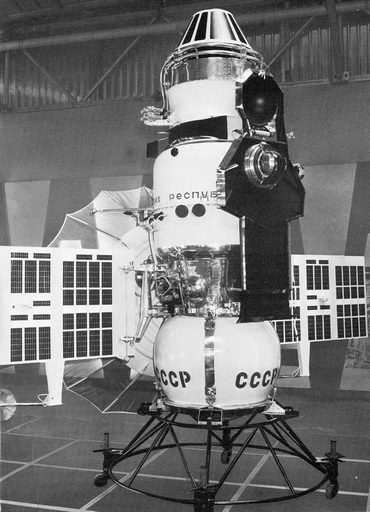
As you can tell from the number, there were two other missions between Venera 1 and this one. However, both encountered similar communication issues as their predecessor, which prevented them from being successful in achieving their goal. Although, Venera 3, in particular, did achieve the feat of being the first spacecraft to enter a planet’s atmosphere and crash on its surface. Going back to Venera 4, and it was tasked with being the first probe to transmit data from inside another planet’s atmosphere.
It took off on June 12th, 1967, also from Tyuratam. Then, on October 18th, 1967, Venera 4 entered Venus’s atmosphere and began sending data back from inside it. Once there, the probe slowed down first thanks to an ablative heat shield and, then, thanks to two separate parachutes. Its instruments were turned on 5 minutes after separation from the probe’s main bus and stayed functional for 93 minutes. In that time, Venera 4 was able to relay 23 sets of readings from Venus’s atmosphere back to Earth. For anyone curious, the probe was over the Elisia region, located at approximately 19o N and 38o E.
As was the case with the Mariner program, Venera 4 was not the last mission of the Venera program. In fact, this ran until 1983, with its last mission being Venera 15.
One More for the Road
For the third and final program that I want to focus on today, we have one that is neither from NASA nor the Soviet Union. Shocking, I know. However, it seemed appropriate to give the spotlight to another space program for once. I decided to go with the orbiter mission, Venus Express by the European Space Agency (ESA). The other option would have been JAXA’s (Japanese Space Agency) Akatsuki. I opted for this one due to the mission’s length. However, if you would like to learn more about the Akatsuki mission — or any other space program — you can let us know in the chatbox.
ESA’s Venus Express
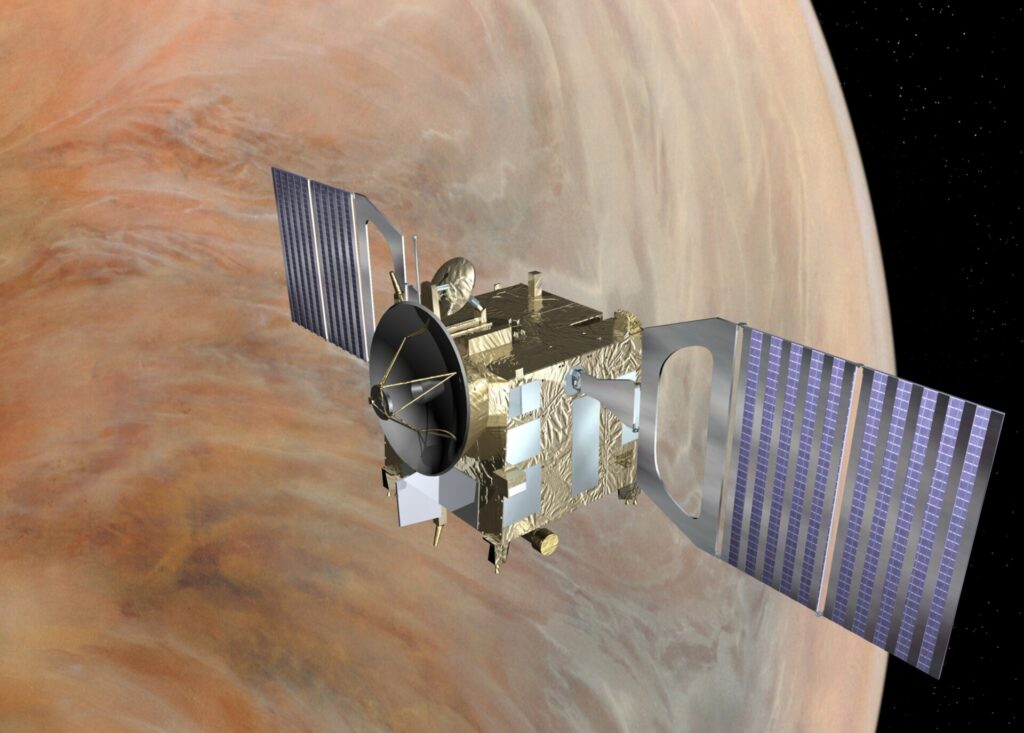
Going back to the Venus Express, this mission launched on November 9th, 2005, from, you guessed it, Tyuratam. The primary objective of it was a deep study of Venus’s atmosphere, with a focus on the plasma environment and this atmosphere’s interaction with the solar wind. The spacecraft’s journey to its destination took 153 days, with the Venus Express first reaching Earth’s twin on April 11th, 2006. Once again, part of the equipment used to reach this planet involved solar panels. However, given the more recent nature of this endeavor, the iteration of these was much more advanced than what we saw before. They were — using NASA’s own words — “two symmetric rotatable wings of 1056 gallium arsenide triple junction (GaInP2/GaAs/Ge) solar cells with a total area of 11.4 square meters interlaced with aluminum strips to minimize heating”.
Once it arrived at the planet, the Venus Express began gathering its data. And while I gave the general focus before, I think this is a good time to dive a little deeper into that. The investigations led by this spacecraft focused primarily on a couple things. One was how the greenhouse effect impacts the formation of an atmosphere. Another was studying the processes behind atmospheric escape and its interaction with the solar wind. A third was finding out more about the super rotation that occurs in the upper atmosphere. Of course, this is just a simplified summary of the research conducted during this mission. However, I hope it provides a good grasp of what it was trying to accomplish. And since I brought up its length before, this mission lasted until November 28th, 2014.
Venus’s Future
Due to the harsh conditions on the planet, nothing as intricate as a rover has been deployed on it. This means that Venus is still ripe with possibilities for future explorations of it. Some of the upcoming ones from NASA include the DAVINCI flyby and probe mission and the VERITAS orbiter one. However, as you can see from those descriptions, nothing about a piece of equipment that is made to stay on the surface of the planet, yet.
And that will end today’s look at the various programs centered around our neighbor. If you would like to learn more about this planet, you can check out the Venus stroll. That was one of my favorites to write, so I highly recommend reading it, if you have not already. And speaking of strolls, next week we are back with another iteration of our Solar System series. This time, the focus will be the Sun itself. And, as that will be the last stroll, I really do suggest tuning back in for it, right here, at impulso.space. “See you” all then.


